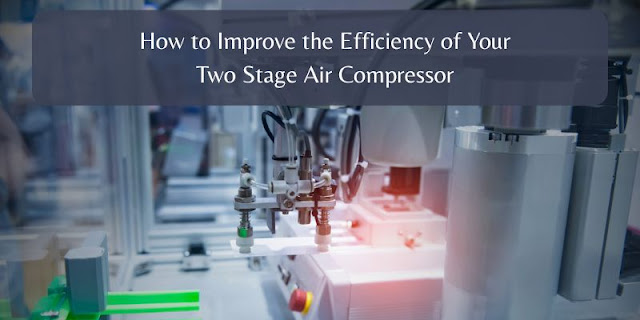How to Improve the Efficiency of Your Two Stage Air Compressor
Maximizing the performance of your equipment is essential for any workshop or industrial setting. Whether you rely on it for powering pneumatic tools, spray painting, or other heavy-duty tasks, maintaining consistent performance while minimizing energy consumption is the goal. When properly operated and maintained, a two stage air compressor can deliver excellent output with impressive efficiency.
Unlike a basic single-stage setup, this model compresses air in two steps, allowing it to produce higher pressures and operate more smoothly. But to truly benefit from this design, you need to understand a few best practices. Improving its efficiency not only saves money on energy bills but also extends the lifespan of the equipment and reduces unexpected downtime.
The first tip is to focus on routine inspections. It’s easy to overlook small leaks in hoses, seals, or fittings, but even tiny leaks can lead to significant losses over time. Regularly check for any hissing sounds or drops in system pressure. By addressing leaks quickly, you prevent the motor from overworking to maintain the desired output, which translates to energy savings.
Equally important is keeping the intake filter clean. A clogged filter restricts airflow, forcing the unit to expend more energy than necessary. Cleaning or replacing filters according to the manufacturer’s recommendations ensures unrestricted flow, helping the equipment work at peak efficiency.
Oil maintenance is another critical factor. Lubrication reduces friction among moving parts, prevents overheating, and keeps everything running smoothly. Make sure you check oil levels routinely and change it based on the recommended schedule. Using clean, high-quality oil reduces internal wear and helps maintain output pressure without added strain.
You’ll want to address the impact of ambient conditions. Operating your system in a well-ventilated area is key. Excessive heat can force components to work harder, increasing wear and raising energy use. Ensure there’s good ventilation around your setup and keep any fans or cooling systems free of dust and debris. This prevents overheating and allows your equipment to run efficiently for longer stretches.
Moisture is another factor that affects performance. When compressed air cools, it naturally creates condensation inside the tank. Failing to drain this moisture can cause rust and lead to damage over time. Drain the tank daily, especially if your workspace is humid. A dry, rust-free tank operates more safely and efficiently.
Many operators forget the importance of proper storage and cleanliness. Keep your equipment in a dry, dust-free area when not in use, and cover it to prevent debris from settling inside. Dirt buildup can clog filters and other components, forcing the system to use more power to maintain output.
Consider adding accessories that improve performance. Installing an aftercooler or air dryer helps remove excess moisture, protecting downstream tools and ensuring dry output. Dry air reduces the risk of tool damage and ensures consistent operation.
Adjusting the pressure settings is another simple way to increase efficiency. Many people mistakenly run their setup at higher pressures than required, which wastes energy. Take the time to evaluate the actual needs of your tools and processes, then fine-tune the pressure settings to match. Even a small drop in pressure can translate to significant energy savings over time.
Training your team is equally important. Make sure anyone who uses the unit understands how to operate it properly, perform basic maintenance, and recognize early warning signs of potential issues. An informed team will spot leaks, drain moisture, and maintain oil levels, all of which keep performance high and costs low.
When your usage demands change, it’s smart to consult a professional. Sometimes an older setup is no longer the best fit for your growing needs. A specialist can evaluate your setup, recommend upgrades or reconfigurations, and help you choose the most efficient solution for your workload.
Implementing a preventative maintenance plan is one of the best ways to protect your investment. Don’t wait for something to break down before you call for service. Schedule regular inspections by qualified technicians who can check gauges, seals, and other critical components. They can catch problems early and ensure everything stays calibrated for peak output.
Technology is also your friend. Consider installing automated monitoring tools that keep an eye on system pressure, temperature, and humidity. These tools help you spot inefficiencies in real time and make adjustments before minor issues turn into expensive repairs.
In conclusion, getting the best performance from your two stage air compressor isn’t just about having the right equipment — it’s about how you use and care for it. Routine inspections, good ventilation, clean filters, proper lubrication, and smart upgrades can help your system operate at peak efficiency while saving money and extending its lifespan. By following these tips and committing to a proactive maintenance plan, you can be confident your equipment will continue to deliver the reliable performance you need for years to come.

.png)


Comments
Post a Comment